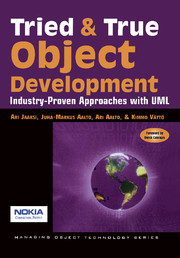Book contents
CHAPTER 2 - OBJECT-ORIENTED DATA MANAGEMENT
Published online by Cambridge University Press: 06 July 2010
Summary
It is hardly possible to imagine real-life information systems that would not need to store the information they manipulate onto some persistent storage media. Practically all applications need to either share common data with each other or store information on disk to make the data accessible—even when the application that created the data no longer exists. Just think about the variety of management information systems that support the value chains of every company: sales and marketing support systems, planning systems, manufacturing support systems, process automation, and so on. Good data management is the key to creating useful applications. The novel application areas such as multimedia and video-on-demand are setting requirements that are even more demanding for storing and manipulating complex data.
It is justified to say that succeeding with data management is by far one of the most critical aspects in modern software development, be it based on the object paradigm or not. However, it has been somewhat surprising to notice that object-oriented data management solutions have been poorly covered in the plethora of textbooks, articles, and magazines written to describe objectoriented software engineering.
During the last few years, we have looked into a number of unsuccessful object-oriented software projects. Some of the reasons for failure appear to relate to data management solutions. Failed development efforts seem to fall into three categories:
Lip Service Projects: These are projects where the phrase object-orientation has been used to give the project a credible and fashionable flavor. In these cases, practical deeds and object-oriented software development ideology do not necessarily meet at all.
[…]
- Type
- Chapter
- Information
- Tried and True Object DevelopmentIndustry-Proven Approaches with UML, pp. 107 - 184Publisher: Cambridge University PressPrint publication year: 1998

